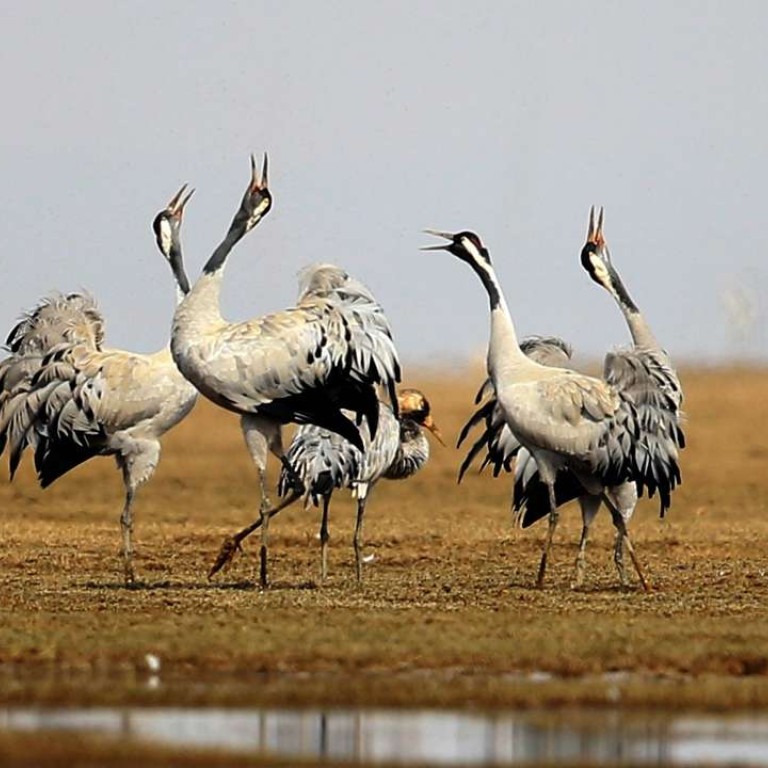
China’s eco-warriors make last stand against Poyang Lake dam
Final review is now under way for project on Lake Poyang, which environmentalists say would be a disaster for several endangered species
Environmentalists are making a last-ditch effort to halt a controversial plan to build a 13 billion yuan (HK$14.5 billion) dam on China’s biggest freshwater lake, Poyang, fearing the project will take a toll on endangered migratory birds and finless porpoises.
Activists are urging the public to file objections to the project, as an environmental risk evaluation is currently under way. Developers will be allowed to start construction once the review is completed.
[The prolonged dry spell] is leading to degradation of the lake’s ecology and environment, and bringing problems to water supply and irrigation
The lake, in eastern Jiangxi province, is one of only two large lakes that still naturally connect to the Yangtze River. But it has been suffering from worsening drought in the winter months over the past decade.
This year, the low-water period began on September 19, more than 50 days earlier than in an average year. Local officials blame decreased water levels in the Yangtze, reduced rainfall and intensive human activities. They say building a series of sluice gates on a channel linking Lake Poyang to the Yangtze would raise water levels in the lake during dry months.
The provincial water resources bureau said the prolonged dry spell “is leading to degradation of the lake’s ecology and environment, and bringing problems to water supply and irrigation”. The province first floated the idea of damming the lake in 2008.

But environmentalists say that extensive lake-bed dredging is the biggest cause of the drop in the lake’s water level. Dredgers take sand from the lake to sell to developers, for use in their projects.
The problem [with the dam] is not whether the Siberian cranes are coming to Poyang for the winter, the question is whether Siberian cranes will still exist in this world
And Zhou Haixiang, a researcher on migrating birds at the Shenyang University of Technology, said raising the water level during dry months would submerge the lake’s wetlands, which provide a unique habitat for endangered birds.
Zhou said that nearly 98 per cent of all Siberian cranes – which are critically endangered – spent the winter months at the lake before migrating further south. The cranes feed on a special water plant that grows only in lakes with changing water levels, according to Zhou.
“The problem [with the dam] is not whether the Siberian cranes are coming to Poyang for the winter, the question is whether Siberian cranes will still exist in this world,” he said. “We have no other choice but to protect them.”
The lake is also home to the highly endangered Yangtze finless porpoise, of which there are thought to be fewer than 800 left.
Over the past few years, the plan to dam the lake has been opposed by both government-backed think tanks and international NGOs.
In 2014, global conservation body WWF said “a dam-free project is supposed to be the best option for Poyang Lake to sustain a healthy ecological system”, a rare case of an international green group challenging a government decision on the mainland.
But the plan is still gathering momentum through the efforts of officials in Jiangxi, although President Xi Jinping said in January that environmental protection should be the focus on the embattled Yangtze River, not new development projects

